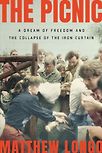Discover Pandipedia
Pandipedia is the world's first encyclopaedia of machine generated content approved by humans. You can contribute by simply searching and clicking/tapping on "Add To Pandipedia" in the answer you like. Learn More
Expand the world's knowledge as you search and help others. Go you!
Early Scottish Maritime History and the Need for Light-Houses
The Scots, recognized for their strong maritime spirit among European nations, were geographically positioned to become adept seafarers[1]. Their trade routes to Hanseatic Towns and other European commercial centers were longer than those of their English counterparts, requiring them to navigate treacherous waters and exposing them to dangers such as enemy ships and inclement weather[1]. Scotland's frequent conflicts with northern powers further necessitated a strong navy to safeguard its commerce[1]. Alliances with foreign entities and the annexation of the Orkney and Shetland Islands also expanded Scotland's foreign trade and solidified its coastal dominion[1].
However, it was the unification of the crowns and kingdoms of England, Scotland, and Ireland that unleashed the full maritime potential of these nations[1]. By the mid-18th century, there was a growing understanding of the strategic importance of the Scottish Highlands, which led the government to promote fisheries, establish towns and harbors, and improve transportation networks through roads and canals[1]. The increasing coastal commerce in Scotland, spurred by British fisheries and the manufacture of kelp for marine alkali, highlighted the need for improved navigational aids[1]. The dangers and length of voyages around Scotland's coasts, particularly near the Orkney and Western Islands, underscored the necessity of light-houses and accurate charts[1].
Early Efforts to Chart the Scottish Coast

Early efforts to improve navigation relied largely on rudimentary guides[1]. The journals and charts from the 1540 voyage of James V, who with twelve ships sailed around a large portion of Scotland, served as a crucial, and perhaps primary, navigational tool for centuries[1]. Later, around 1740, Rev. Alex Bryce created a geometrical survey of the northwest coast of Scotland at the request of the Philosophical Society of Edinburgh[1]. Further advancment was made in 1750 with Murdoch Mackenzie's charts of the Orkney Islands, which were later extended to the Western Highlands and Islands under government commission[1]. Despite these improvements, large shipping vessels continued to avoid the narrower passages, preferring the more hazardous but better-known routes along the open sea[1]. The construction of light-houses was therefore viewed as critical to guiding ships safely along these routes[1].
The Establishment of the Northern Light-House Board

The demands of shipmasters and owners were heard, and in 1786, Mr. DEMPSTER of Dunnichen brought the idea of a Light-house Board to the Convention of Royal Boroughs of Scotland[1]. This resulted in the passage of an act establishing the board and authorizing the construction of four light-houses in northern Scotland: at Kinnaird Head, on the Orkney Islands, on the Harris Isles, and at the Mull of Kintyre[1]. The act also introduced a levy on ships to fund these projects[1].
The initial commissioners included prominent officials such as His Majesty's Advocate and Solicitor-General for Scotland, the Lord Provosts and First Bailies of Edinburgh and Glasgow, the Provosts of Aberdeen, Inverness, and Campbeltown, and the Sheriffs of various northern counties[1]. Thomas Smith was nominated Engineer to the Board[1].
Sir James Hunter-Blair, the Lord Provost of Edinburgh, convened the first meeting of the board where he stressed the importance of the new act and how imperative it was to gather as much advice from experienced engineers as possible[1].
Early Light-House Construction and Financial Challenges
Initial efforts focused on corresponding with landowners to acquire sites for the light-houses[1]. By December 1787, a light-house was erected on Kinnaird Castle[1]. The construction of the Mull of Kintyre Light-house proved more challenging due to its remote location, and the light was not exhibited until October of the following year[1]. The early progress of the Northern Light-houses was impeded by limited funds, stemming from a light-house duty deemed too small[1]. To address this, Parliament passed an act in 1788, increasing the duty and enabling the Commissioners to borrow additional funds for their operations[1]. By 1789, light-houses were also erected and lit at Island Glass in Harris and on North Ronaldsay in Orkney[1].
Later Light-House Constructions and Financial Management
ThePladda light-house was completed in 1790, equipped with a distinguishing feature in 1791, showing two distinct lights[1]. The increasing demands for additional light-houses and better management of the existing ones led to the appointment of annual inspections and supply vessels[1]. In 1794, work began on the Pentland Skerry Light-houses, with the author commencing his service for the Board[1].
An act passed in 1798 incorporated the Commissioners into a body politic, allowing them to hold stock and invest surplus funds[1]. By 1806, the Inchkeith Light-house became operational, marking a new era in the Board's construction, with the buildings becoming more permanent and substantial[1]. Notably, the account highlights the benefits of the Board's management, stating, "...that the progress of the Light-house works proceeded, without experiencing any interruption from want of funds"[1].
The Bell Rock Light-House
Several petitions were made to the commission to provide some sort of aid near the Bell Rock due to the immense danger and volume of ship traffic in the area[1]. Due to limited funds as of 1803, the erection of a light-house on the Bell Rock was not feasible, and the further consideration was delayed[1].
The construction of the Bell Rock Light-house between 1807 and 1810 marked a significant endeavor[1]. Despite problems with supply delay the effort, the light was exhibited February 1, 1811[1]. The name, situation, and dimensions of the rock, the designs for the light-house, the act passed by the Lord Advocate Erskine, and the report of the House of Commons committee were important steps in the process[1]. Special problems called for both a floating light and masonry construction on the rock itself[1].
Let's look at alternatives:
- Modify the query.
- Start a new thread.
- Remove sources (if manually added).
- Request a manual search from our human research team.

Quantum computing is poised to revolutionize the way we process and analyze information, offering capabilities that extend far beyond those of classical computing. Below is a comprehensive report that highlights the fundamental differences between quantum and classical computing, based on insights from multiple reliable sources.
Fundamental Differences
Data Representation

The core difference between quantum and classical computing lies in how they represent data. Classical computers use bits as their basic unit of information, which can exist in one of two states: 0 or 1. This binary system is the foundation of classical computing and all its operations [1][2][4][6].
On the other hand, quantum computers use qubits, which can exist in a state of 0, 1, or both simultaneously thanks to a phenomenon known as superposition [1][2][3][4][6][7][10]. This enables quantum computers to encode and process vastly more information at the same time compared to classical computers.
Data Processing
Classical computers perform operations sequentially, solving problems step-by-step [1][3][4][6]. Even with parallel processing capabilities, classical computers still essentially rely on their bits flipping between 0 and 1 states to compute [4][7].
Quantum computers, however, can perform multiple calculations simultaneously. This is facilitated by superposition and entanglement—where qubits become interconnected, such that the state of one qubit depends on the state of another, allowing for faster information transfer and processing [1][2][3][4][6][7][10].
Computational Power
Exponential vs. Linear Scaling

Classical computing power increases linearly with the number of transistors. A traditional computer with more transistors can process more bits but only linearly increases its computational speed [2][7].
In contrast, a quantum computer's power scales exponentially with the number of entangled qubits. For instance, while two qubits can store and process 4 bits of information, three qubits can handle 8, and so on [1][4][6][7][10].
Use Cases and Suitability
Classical computers are well-suited for everyday tasks and operate efficiently under normal conditions, making them ideal for use in a wide array of applications from basic computing needs to complex simulations [1][2][4].
However, quantum computers excel in solving specific types of problems that involve large datasets and complex variables, such as cryptography, drug discovery, climate modeling, and optimization tasks. For example, quantum computers can simulate molecular interactions at a quantum level, offering potential breakthroughs in drug development and materials science [3][5][6][10].
Environmental and Operational Conditions
Physical Requirements

Classical computers typically operate in environments that do not require stringent physical conditions. They perform well within typical room temperatures and are highly adaptable [1][2].
Quantum computers, however, often need to be in highly controlled environments, such as temperatures near absolute zero, to minimize noise and maintain qubit stability. Achieving these extremely cold environments is crucial to prevent qubits from decoherence, which is the process where qubits lose their quantum state due to environmental interference [1][2][4][6][10].
Error Rates and Stability
One of the main challenges for quantum computing is maintaining qubit stability and reducing error rates. Whereas classical bits offer reliable and consistent performance, qubits are highly sensitive to environmental disruptions, leading to higher error rates. Advanced error correction techniques are required to manage and mitigate these issues [1][4][6][8][10].
Practicality and Development Stage
Current Capabilities and Limits

Despite its potential, quantum computing is still in its nascent stages. Current quantum computers face limitations in terms of scalability, qubit stability, and error rates. They are not yet capable of replacing classical computers for most everyday tasks or commercial applications [1][2][3][5][6][7][8].
Research and Future Prospects
Ongoing research and substantial investments are pushing the boundaries of what quantum computing can achieve. Major technology firms like IBM, Google, and Microsoft, along with startups and research institutions, are heavily invested in advancing quantum technology. The future potential for quantum computing includes significant applications in various fields, as highlighted by IBM's prediction that quantum computing could become a $1.3 trillion industry by 2035 [1][3][6].
Conclusion
Quantum computing differs fundamentally from classical computing in its use of qubits, its operational mechanisms, and its potential computational power. While classical computers will continue to be indispensable for many applications, quantum computers offer unprecedented capabilities for solving specific, complex problems that are currently beyond the reach of classical technology. As research progresses and technological barriers are overcome, quantum computing is expected to complement classical computing, jointly pushing the frontiers of what is possible in data processing and problem-solving [1][2][3][4][5][6][7][8][10].
Let's look at alternatives:
- Modify the query.
- Start a new thread.
- Remove sources (if manually added).
- Request a manual search from our human research team.
Get more accurate answers with Super Search, upload files, personalised discovery feed, save searches and contribute to the PandiPedia.
The Making of Donald Trump
A devastating attack on the Republican presidential nominee, exploring Trump's business and political journey by Pulitzer Prize-winning journalist David Cay Johnston[4].
My First Life
An intimate interview-based biography of former Venezuelan president Hugo Chávez, which probes his history and philosophy while showcasing his controversial leadership[4].

Life So Far
Betty Friedan’s memoir that chronicles her personal journey and the founding of the National Organization for Women, offering insights into the feminist movement of the 1960s[7].

This Child Will Be Great
Ellen Johnson Sirleaf's memoir detailing her journey from oppression to becoming Africa's first elected female president, marked by resilience amid political turmoil[7].

Fire and Ashes
Michael Ignatieff's self-reflective account of his brief political career, revealing the humbling realities of campaigning and the lessons learned from his defeat[7].
Promise Me, Dad
Joe Biden's deeply personal memoir about family, loss, and the challenges of balancing public service with private grief during a pivotal year in his life[8].
The Truths We Hold
Kamala Harris's exploration of the shared values that unite people and her experiences as a child of immigrants and civil rights activists[8].
A Woman’s Work
Harriet Harman’s account reflecting on her role in transforming politics and women's lives in Britain, detailing her experiences as a long-serving female MP[8].
Diary Of An MP’s Wife
Sasha Swire's humorous and candid insights into life as the wife of a politician, capturing significant political events from a personal perspective[8].
Diary of a Lifetime
A compelling compilation of personal reflections that offer a window into the lives of notable figures and their experiences in politics[2].
A Day in the Life of Abed Salama
A poignant narrative that delves into a tragic school bus crash, showcasing the intertwined lives of Palestinians under occupation[6].
King: A Life
Jonathan Eig's comprehensive biography that captures the essence of Martin Luther King, Jr. utilizing new archival materials and unseen revelations[3].
Master Slave Husband Wife
A gripping account of the Craft couple's escape from slavery, highlighting their courage and the challenges they faced in a hostile society[3].
Monet: The Restless Vision
Jackie Wullshläger's biography that reveals the turbulent personal life of the Impressionist painter and its influence on his art[3].
The Gendered Politics of Space
An enlightening look at gender dynamics in political environments, exploring the implications of space in shaping political narratives[11].

Every Day is a Gift
Tammy Duckworth’s memoir detailing her life as an Iraq war veteran who overcame severe injury to become a U.S. Senator[11].
Revolutionary Acts: Love & Brotherhood in Black Gay Britain
A remarkable narrative that illuminates the experiences of black gay men in political and social contexts[6].
Our Enemies Will Vanish
A detailed account of the events leading up to the 2022 invasion of Ukraine, providing context for the ongoing conflict and its global implications[6].
The Achievements and Reforms of Boris Johnson
An in-depth look at the political journey and controversies surrounding the former British Prime Minister, including his leadership during Brexit[8].
The Incarcerations
A narrative examining India’s democracy through the stories of its bravest activists and campaigners[6].
The Picnic
A narrative capturing a historic moment of peaceful protest at the Iron Curtain, illuminating the human connection behind political change[6].
Let's look at alternatives:
- Modify the query.
- Start a new thread.
- Remove sources (if manually added).
- Request a manual search from our human research team.
Let's look at alternatives:
- Modify the query.
- Start a new thread.
- Remove sources (if manually added).
- Request a manual search from our human research team.

Creating a biodiverse garden is essential for supporting local wildlife and fostering a healthy environment. By making strategic choices in plant selection and garden management, anyone can transform their outdoor space into a haven for various species.
Choose the Right Plants

Selecting the right plants is a crucial first step. Focus on incorporating a mix of native plants, which have evolved alongside local wildlife and provide essential pollen and nectar resources. Research shows that native plants are often more beneficial as they support a broader range of pollinators and other organisms that rely on them for sustenance[1][3].
'Flowers provide pollen and nectar for bees, butterflies and other insects that perform the vital task of fertilisation,' making it essential to avoid highly bred cultivars that often lack these key characteristics[2]. Moreover, aim for a diverse array of species that flower across different seasons—this ensures continuous food availability for wildlife throughout the year. For example, include early bloomers like Crocus and Mahonia for spring and later bloomers such as ivy for autumn and winter[2].
Create Diverse Habitats

In addition to plant diversity, creating different habitats within your garden is vital for fostering a richer ecosystem. Set aside areas of your garden to grow wild, allowing plants to flourish naturally[5]. This can include leaving patches of long grass that serve as shelter and food sources for small mammals and birds[1][3][10].
Building features like log piles, dead wood stacks, and rock gardens offers shelter for insects and other wildlife, as well as creating microhabitats that can accommodate various species[5][7]. Bug hotels and bat boxes can also provide essential nesting and hibernation sites for local fauna[2][10].
Encourage Water Sources

Water is vital for sustaining life in your garden. Installing a pond, even a small container or birdbath, provides hydration for numerous species, from birds to beneficial insects like dragonflies[1][2][5]. Ensure that these sources have sloping sides or perching spots, which allow wildlife easy access and safety.
Regularly maintaining water features by keeping them clean and filled will make them more inviting to wildlife, encouraging them to visit—and potentially settle—permanently in your space[4][6].
Embrace Natural Processes

Allowing your garden to become a bit messy can significantly enhance its biodiversity. Piles of leaves, twigs, and grass clippings provide food and habitats for insects and small animals[1][4][5]. Composting not only recycles nutrients back into your garden but also creates a hotbed for beneficial organisms like worms and beetles that contribute to a thriving ecosystem[2][7].
Avoiding the use of chemicals is essential for maintaining biodiversity. Many pesticides negatively impact beneficial insects and disrupt natural predation processes—such as birds feeding on pest populations[2][4]. Instead, allow nature to maintain its balance, recognizing that some 'pest' species are vital for the life cycles of others[1][2].
Engage the Community
Gardening for biodiversity doesn’t have to stop at your own yard. Engaging with neighbors and your community can amplify the impact of your efforts. Collective actions, such as planting trees in public spaces or creating community gardens, can foster larger networks of biodiversity[2][3][9]. Consider advocating for and participating in local initiatives aimed at habitat restoration, which can create pathways for wildlife that transcend individual gardens.
Conclusion

Transforming your garden into a biodiversity hotspot is more than just an aesthetic pursuit. It's about understanding and participating in the intricate web of life around us. By choosing the right plants, creating diverse habitats, providing water sources, embracing natural processes, and engaging the community, you can play a significant role in supporting local wildlife and contributing to a healthier planet. Each small step matters, and collectively, gardeners can make a substantial impact towards enhancing biodiversity in our shared environments.
Let's look at alternatives:
- Modify the query.
- Start a new thread.
- Remove sources (if manually added).
- Request a manual search from our human research team.

Humor can be dissected as a frog can, but the thing dies in the process and the innards are discouraging to any but the pure scientific mind.
E. B. White[3]
The more you know humour, the more you become demanding in fineness.
Georg Lichtenberg[3]

We may hope that machines will eventually compete with men in all purely intellectual fields... But when it comes to humor, the human touch is irreplaceable.
Turing[1]
The only thing that will redeem mankind is cooperation.
Bertrand Russell[1]
Humor is a social binding agent.
SEAN KIM, LYDIA B. CHILTON[2]
Let's look at alternatives:
- Modify the query.
- Start a new thread.
- Remove sources (if manually added).
- Request a manual search from our human research team.
Get more accurate answers with Super Search, upload files, personalised discovery feed, save searches and contribute to the PandiPedia.

An article on Progressive Web Apps (PWAs) could explore a range of topics highlighting their importance and functionality in modern web development.
It could start with an overview of PWAs, defining them as websites that use recent web capabilities to provide a native app-like experience on both mobile and desktop devices, enabling cross-platform compatibility ([1],[5]). The article might include key features of PWAs such as responsiveness, offline functionality through service workers, and the ability to send push notifications, which enhance user engagement ([2],[3]).
Statistics on PWA adoption could be shared, highlighting that as of January 2023, over 54,000 websites utilize PWAs, with reported engagement increases between 20% to 250% for businesses that transition to them ([4]).
A thorough comparison with native apps could illustrate that PWAs are generally more cost-effective to develop and maintain due to a single codebase, while also discussing their limitations, such as the need for custom payment systems and complex publishing processes for app stores ([6],[2]).
Success stories of companies like Trivago and Mynet could be included to demonstrate the practical benefits realized after adopting PWAs ([4]).
The article could also cover development considerations, recommending technology stacks like Angular + Ionic and React + Next.js, alongside performance optimization techniques to improve loading times and caching ([3],[2]).
Finally, a discussion of future trends could highlight the growing convergence of PWAs with native app functionalities, increased user expectations, and advancements in web technologies that will continue to shape the landscape of digital experiences ([5],[3]).
Let's look at alternatives:
- Modify the query.
- Start a new thread.
- Remove sources (if manually added).
- Request a manual search from our human research team.
Let's look at alternatives:
- Modify the query.
- Start a new thread.
- Remove sources (if manually added).
- Request a manual search from our human research team.

A MADA, or Mobile Application Distribution Agreement, is a licensing arrangement that enables Original Equipment Manufacturers (OEMs) to license a set of Google Mobile Services. It allows for access to a suite of applications and includes some placement requirements, providing users with a consistent navigation experience across devices. Additionally, it ensures that developers have a reliable set of APIs for writing Android applications and provides access to the Google Play Store for application updates and distribution[1][2].
Let's look at alternatives:
- Modify the query.
- Start a new thread.
- Remove sources (if manually added).
- Request a manual search from our human research team.

The pleasure of satisfaction is triggered by the brain's reward system, primarily through the release of dopamine, a neurotransmitter involved in reinforcing pleasurable behaviors. Activities that bring pleasure, such as eating good food or engaging in social interactions, stimulate the release of dopamine, creating a feeling of enjoyment and motivation to repeat those behaviors[2][5][6].
Additionally, regions like the nucleus accumbens and orbitofrontal cortex play key roles in processing these rewarding experiences, linking sensory input to emotional responses. The effectiveness of these brain circuits ensures that a pleasurable experience leads to reinforcement and the desire to engage in similar activities again[4][6].
Let's look at alternatives:
- Modify the query.
- Start a new thread.
- Remove sources (if manually added).
- Request a manual search from our human research team.






































